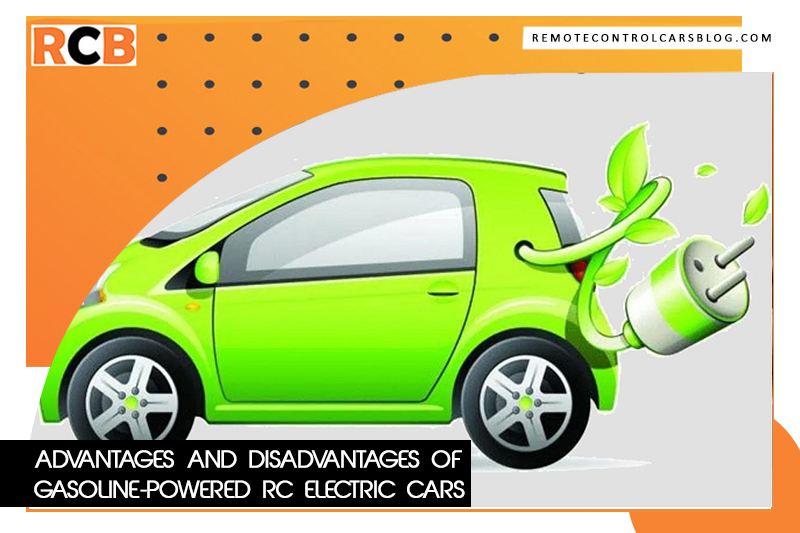The majority of LEGO remote-controlled cars for children are powered by an electric motor. But there are also remote-controlled cars that have a gasoline engine. These cars are very popular, especially in the outdoor sector and in races. and there are certain advantages and disadvantages of gasoline-powered RC cars. Therefore, these cars are explicitly declared as remote-controlled cars, which are to be used exclusively outside.
Gasoline-powered RC cars come in a variety of sizes and styles, from small and simple models to larger and more complex ones. They are often used for racing, both competitively and for fun, and can be customized with different parts and accessories to enhance their performance and appearance.
Key Features of Gasoline-Powered RC Cars
Gasoline-powered RC cars have a number of features that make them unique and appealing to enthusiasts. Some of the key features of these miniature vehicles include:
Powerful Engines: Gasoline-powered RC cars are powered by combustion engines that run on gasoline. These engines are capable of producing a significant amount of power, allowing the car to reach high speeds and perform impressive stunts.
Realistic Sound: Gasoline-powered RC cars produce a realistic engine sound that adds to their appeal and creates an immersive racing experience.
Durability: Gasoline-powered RC cars are built to withstand the rigors of racing and off-road driving. They are designed to be tough and durable, with strong suspension systems and sturdy construction.
Customization: Gasoline-powered RC cars can be customized with a variety of parts and accessories to enhance their performance and appearance. Enthusiasts can choose from a wide range of tires, engines, bodies, and other components to create customized vehicle that suits their individual preferences.
It is imperative that you take this into account when using a radio-controlled car. Basically, it can be claimed that Gasoline powered Rc cars are particularly family-friendly. They can be used in the house and in the garden. The advantages and disadvantages of gasoline-powered RC cars can be found at a glance below
Advantages of gasoline-powered RC cars
Disadvantages of gasoline-powered RC cars
Types of remote-controlled cars
There are two different categories of gasoline-powered RC electric cars One version is powered by an electric motor, while the second variant is powered by a gasoline engine.
1) Remote Controlled Electric Car
- Up to 50 km/h
- Suitable for indoors and outdoors
- Sometimes even drives in the water
2) Remote Controlled Gasoline Car
- Up to 100 km/h
- Only suitable for outdoors
- Should not drive in the waste
There are mini remote-controlled cars for toddlers, remote-controlled cars for girls and boys, and cars that are also suitable for older children. In the following, we will show you which age groups can enjoy a remote-controlled car with a camera, for example. Remote-controlled off-road cars for toddlers come from the most famous brands and manufacturers. These vehicles are intentionally designed to be simple so that your offspring can operate these vehicles intuitively. The housings of most remote-controlled model cars are robust and insensitive. It can quickly happen that children drop or throw the car. Remote-controlled cars for the outdoors are small and lightweight. They can be easily controlled by small children. Read Related Post: How To Dispose Of Lipo RC Batteries There are also suitable crawlers for the age group between three and six years. The fact that the motor skills of children of this age group are better developed also leads to the fact that the RC remote control is more extensively equipped. This allows the children to learn challenging movements so that they can later move the vehicle through difficult terrain. As parents, you should make sure that, for example, the remote-controlled cars of Jamara from 3 do not drive too fast. Please note the age information on the back of the package. If you only opt for a remote-controlled car with a battery, it is for infants from the age of four. Hint: Search the trade for vehicles that work with a steering wheel as a controller. In this way, your children get an intuitive driving experience. Now, your children should have developed their motor skills to the point where they not only learned to write in school but also no longer need as much help using a remote-controlled car. Therefore, the remote control of RC combustion engines becomes more demanding. This gives your kids more options: From the age of six, your kids can try out remote-controlled trucks with gasoline engines outdoors. Of course, you should not leave your children unattended. First, see if your child would like to get involved in assembling a remote-controlled car. For the right model, you should consider the age requirements of the manufacturer. From the age of ten, your child will be able to play with different RC cars. It may already be quite powerful and fast remote-controlled cars in this age group. However, these should not exceed a maximum speed of 5 km/h. Children from the age of 14 are old enough to familiarize themselves with all variants of remote-controlled cars. Young people can master all self-made sentences with which there are no limits to creativity.Remote-controlled cars – 0 to 6 years
Remote-controlled cars – 6 to 14 years
Kits and finished cars
Remote-controlled car tests have shown that a fully assembled version is best suited for children who still want to gain initial experience. Even if your child has wanted a remote-controlled car for a long time, he may lose interest in assembling it after a short time.
Therefore, get a cheap remote-controlled car for toddlers at the beginning, before you spend a lot of money on a high-quality car that your child can assemble himself. If your child is permanently enthusiastic, you can also consider kits.
In this case, however, it is better not to opt for versions that are marked with “RtR”. This abbreviation stands for “Ready to Run” and means that the car can be put into operation immediately after inserting the batteries. However, if the car is marked with “ARR”, you make the better choice: This abbreviation stands for “almost ready to run”. You can not use this car immediately, more components are required.
It is best if you are looking for complete kits. You will receive building instruction, with which you will succeed in handicrafts. As a rule, the kits are designed in such a way that you as a tinkerer can determine the color of the cars yourself. This allows you to build individual vehicles that will allow you to stand out from the crowd. In addition to cars, there are also remote-controlled tractors to choose from.
Tip:
Check out remote-controlled car tests and remote-controlled car test winners. There you will not only find the remote-controlled car test winner but also a lot of tips on optics and performance.
Which manufacturers are there? The following manufacturers build remote-controlled cars. How do I assemble a remote-controlled car myself? It is possible that after some comparisons for remote-controlled cars, you can build such a car yourself. The basic features are always the same: first, you have to build the chassis for the remote-controlled racing car. Then attach the wheels and motors to it. In the next step, you stick the battery holder on, then you have to attach the motor circuit. The so-called ArduinoMircocontroller is then positioned. More information on how to assemble an electric car for children yourself can be found on the net. How do I tune a remote-controlled car? A good question is always how to get the most out of your remote-controlled car. The answer to this question can be found below: If you already have a passion for a model car, then you can do a tuning. This means that you increase the performance of the car. You can adjust the combustion engine perfectly and experiment with different fuel mixtures. Also, look at the forums of experts. You can also tune RC cars with electric drive. For example, use stronger batteries here. Finally, you can improve the look of model-making cars. Do a different paint job or change the tires. Is there already a test from Stiftung Warentest? Unfortunately, Stiftung Warentest has not yet carried out any remote-controlled car tests in 2022. But you can look at other comparisons on the net. There are numerous tests for remote-controlled cars. And there you will not only find helpful information for purchase advice. Rather, in these tests, you will also find the generally best remote-controlled cars. You can use these as a good guide for your purchasing decisions. In the Stiftung Warentest category Children and Family, you can get a lot of information about toys, children’s furniture, or children’s car accessories. Remote-controlled car for water and land? A remote-controlled electric car can partially drive in the water, while a remote-controlled gasoline car should not drive in the water. However, both types of remote-controlled cars can drive in the countryside, whereby the remote-controlled gasoline car is only suitable for outdoor use and the remote-controlled electric car can drive both indoors and outdoors. Are there remote-controlled cars in which children can sit? There are remote-controlled cars for children between the ages of three and five, which the children can even sit and drive. However, these remote-controlled cars are more expensive and cost several hundred euros.
Read Related Products Reviews: Best wall climbing RC car for 2022
Does the Monster Jam Megalodon Storm drive the remote-controlled car on water? Our comparison of remote-controlled cars has shown that the monster Jam model can also drive on water due to the waterproof body as well as the correspondingly dimensioned tires. However, the remote control is not waterproof. Caution is advised here.Batman All-Terrain Batmobile
What speed does the Overmax X-Flash reach remote-controlled cars? This remote-controlled car from Overmax reaches a speed of up to 45 km/h shortly after take-off. The two replaceable batteries provide additional driving pleasure. So the game does not have to be interrupted to charge the battery.Overmax X-Flash
For what age is the Fisher Price GVY94 toy car suitable? This remote-controlled car from Fisher Price is suitable for children from the age of three with its simple operation. The four driving directions can be easily operated on the remote control. In addition, there is a beginner and a professional setting.Fisher Price GVY94









